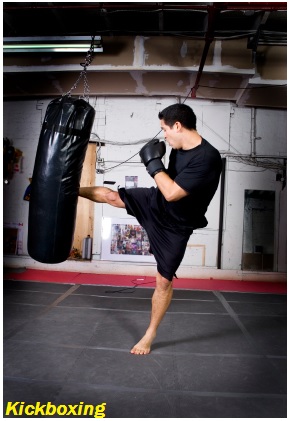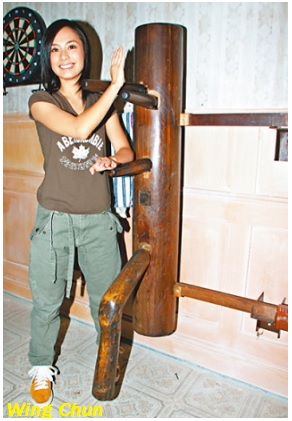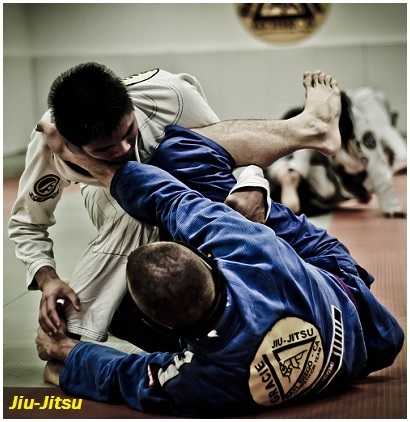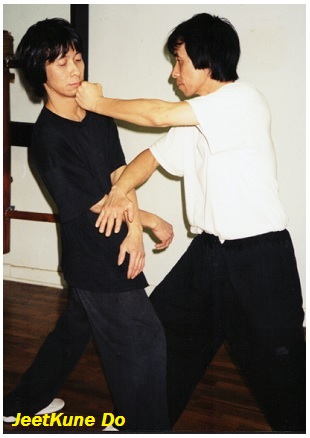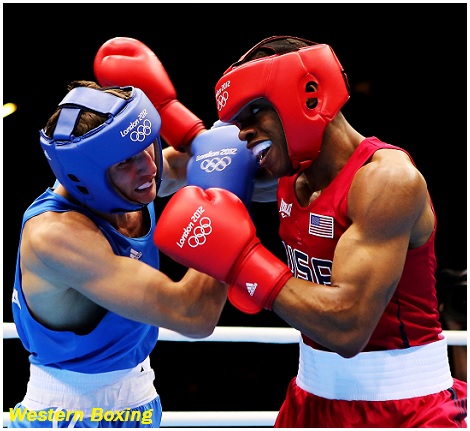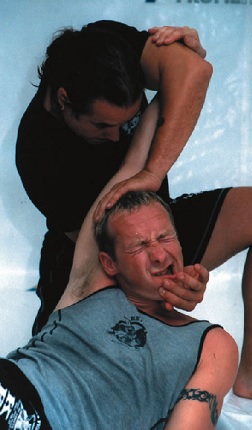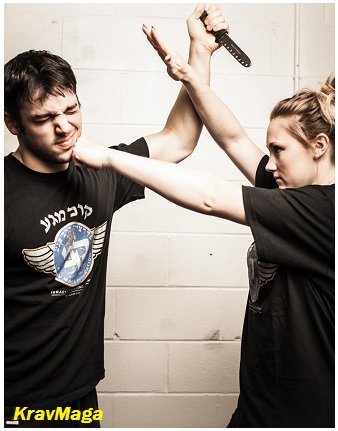Tag Archives: krav maga
Martial Arts for Self Defense
A lot of people take special interest in Martial Arts. It’s probably because the world is getting dangerous every day. And the idea that your learned skill will give you some kind of protection from any adversary is enough motivation to pursue Martial Arts lessons. The following lists down the famous Martial Arts for self- defense.
Kickboxing. For self-defense, kickboxing focuses on fast-paced, distracting and accurately aimed at all open opportunities with the punches, kicks and knees. The most famous offshoot of kickboxing is Muay Thai which makes use of the hands, feet, knees, and elbows as the weapon to ward off an attacker. The assailant may have a knife or a gun and may use it, but a kickboxer can distract an opponent with his strikes as he uses all his 8 body weapons to disarm or rid the enemy with any harmful weapon.
Karate. It is primarily a striking art with emphasis on attack deflection, using kicking, punching, knee, elbow strikes and open-handed techniques such as knife-hands and ridge-hands. Grappling, restraints, locks, throws and vital point strikes are learned.
Aikido. This interesting martial art is performed by blending with the motion of the attacker and redirecting the force of the attack instead of opposing it head-on. With few striking moves, Aikido is based on the principle that an attack from an opponent will allow you to strike back at his vulnerable points.
Wing Chun. Bruce Lee learned this Kung Fu art from Yip Man, which Lee found too slow and formal for self-defense. He developed his own version of Wing Chun where he addressed the inadequacies he found in Wing Chun. Lee still used Wing Chun’s signature punches – fast, rapid-fire left, right punches to the attacker’s chest instead of the belly or the throat. The target is the sternum or solar plexus.
Jiu-Jitsu. This is the most universal style of martial art. It incorporates elements of hard striking, grappling, eye gouging, choke holds, joint locks, biting and the awareness of the defender’s center of gravity against the attacker’s center of gravity. By lowering your center of gravity under his, jerking him over or around you, you will be able to throw your attacker.
Jeet Kune Do. This is Bruce Lee’s enhanced version of Wing Chun. Bruce Lee worked on the principle of a “style without a style” where you ought not to be thinking anything but the attack of the opponent and your response to such attack. If thoughts are not cleared from the head, they will slow you down. Only one stance is used – the western fencing “en garde” stance.
Western Boxing. All a boxer needs is one swing. Boxers throw punches harder, faster and more accurately than any other trained fighter on earth. To punch properly, boxers spend 4 years of training. And because boxing does not allow kicking, boxers put all their strength in their hands.
Brazilian Jiu-Jitsu. This is an offshoot of Japan’s jiu-jitsu which mixes the original jiu-jitsu’s standing throws and strikes with ground fighting, emphasizing on manipulating joints and overall control of the attacker or opponent.
Keysi Fighting Method. This has almost no kicks. It makes use of every weapon the body can quickly wield – fist, head, knees and elbow. This art is designed to strike with the sharp elbows which are more powerful than straight punches because they employ the entire upper body in bringing the firm muscle, from the root of the little finger to the wrist, down like a hammer against the target.
Krav Maga. This is Israel’s national martial art that follows a no-holds-barred incapacitation for the purpose of street survival. It incorporates many martial art elements such as western boxing punches, Greco-Roman wrestling, Brazilian Jiu-Jitsu ground fighting, Karate kicks and knees, Jiu-jitsu’s throws and grappling.
Learning self defense could be your saving grace in times of trouble. It is somehow important to at least learn the basics of any of these martial arts for self defense. If you want to learn Muay Thai, there are great Muay Thai training camp in Phuket that have been so popular to both locals and foreign nationals who want to learn the sport. By enrolling in these Muay Thai training camps, you’ll be taught not only the sport but great discipline, focus and total balance. Learn the other benefits of Muay Thai by clicking this.
List of Lethal Martial Arts ever Created
People have perpetually strived to find, develop and use the most effective ways of defending one’s self and inflicting pain to the opponent. In ancient times they used stones and sticks. This has developed into sometimes artful but seriously lethal martial arts. The following are 10 most lethal arts ever developed and currently in use.
- Rough and Tumble. This is one of the few fighting styles indigenous to the United States, which grew popular during the American Revolution or thereabout. It’s laden with violence and places emphasis on maximum disfigurement of the opponent. Often, it involves gauging out each other’s eyes or biting the opponent’s tongues. This is one bloody and violent form of fighting between opponents.
- Muay Thai. Known as the “Art of Eight Limbs”, this combat sport makes heavy use of elbow and knee strikes. This deadly form of self defense emerged from Thailand. The birth of Muay Thai was known to be used as defense against an early colonization.
- Krav Maga. This is the world’s most dangerous martial arts and it came from one of the most beleaguered regions of the world – Israel. This non-sport martial arts was developed for use by the Israeli Defense Force or IDF, completely without regard for the opponent’s well-being. The entire self-defense concept is based on the assumption that the opponents are out to kill you. And therefore, it is fitting to fight off with brutal techniques that will inflict serious pain to the opponent and in most cases often end up in the death of the adversary.
- Bacom. This is also called Vacon, a Peruvian martial art developed in the streets of Lima, combining several martial arts that will quickly inflict maximum injury and harm to the opponent. This also involved use of hidden weapons and deceiving tactics which almost always result in the opponent’s death.
- Pugilism. This combat sport is also known as boxing but has developed many variations across the globe. Those using this martial art targets the head for serious harm and because of this was outlawed in several countries in the 19th century.
- LINE. Linear Infighting Neural override Engagement is a combat technique used by the US Marine Corps in the 1990s which almost always involved killing the opponent. It is still used by some of the special forces. Due to its lack of flexibility, LINE was succeeded by the Marine Corps Martial Arts Program or MCMAP in recent years. LINE’s dangerous and lethal techniques are not applicable in peacekeeping operations or other non-emergency situations.
- Vale Tudo. This is a Portuguese word that means “anything goes”. This full contact combat sport, famous in Brazil has no many rules and adopts techniques from a variety of martial arts. This has grown to be an extremely bloody and harmful combat sport that it had to go underground.
- Ninjutsu. This originated from feudal Japan where shinobi or ninja practiced this martial art which focused on non-traditional fighting techniques, surveillance and assassination. The practitioners were sometimes referred to as non-humans or “hinin”.
- Jailhouse Rock. This involved numerous improvisational fighting techniques developed within the US jail system and some of the most common types are Brick City Rock, 52 Handblocks and Stato. This is practically a non-existent martial art because not much is known about them.
- Kapu Ku’ialua. Some call it Lua, a non-traditional martial art from Hawaii that is focused on breaking bones, twisting joints and even open ocean warfare. The name means “two hits”. Practitioners elect to use odd means to secure a win such as coating their bodies with coconut oil so opponents cannot get a grip on them during a fight.
Practicing any kind of lethal martial arts above could be synonymous to fatal injury. Since most martial arts presented above are considered lethal, having strict provisions and formulating rules that would not compromise the fighter’s life in continuously practicing the sport is present.




